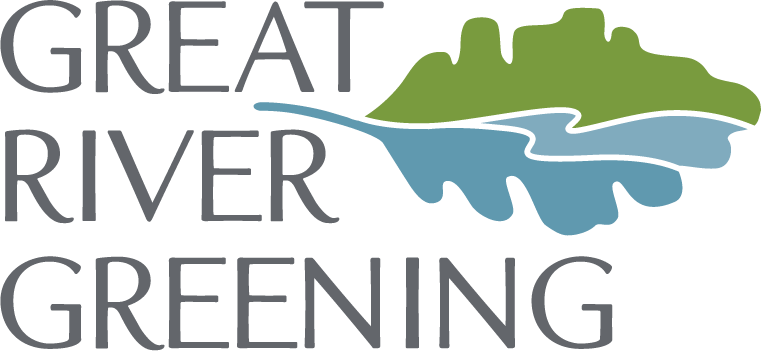Conservation Grazing at Pilot Knob Hill
[field name=VIDEO]As part of a long-term prairie reconstruction effort at Pilot Knob Hill in Mendota Heights, Great River Greening conducted a conservation grazing event on a warm, sunny morning this July.Conservation grazing is a restoration technique that introduces grazing livestock to feed on grasses as a means to increase the biodiversity of the native landscape. For this event, several horses and ponies will be introduced to a section of the prairieIn addition to conservation grazing, other efforts, including prescribed burning, mowing, and removal of buckthorn and knapweed invasive species, have been implemented throughout the year. This combination of conservation efforts is carefully planned in order for native species to thrive and nonnative species to be kept in check.Funding provided by City of Mendota Heights through a grant from the National Trust for Historic Preservation, Dakota County Farmland and Natural Areas Program, and the Minnesota Environment and Natural Resources Trust Fund (ENRTF).About Pilot KnobPilot Knob is a sacred, spiritual site and burial ground for the Dakota people, known to them as Oheyawahi, "the hill much visited." It is also the signature site of the Treaty of 1851, where millions of acres of Dakota land were ceded to the United States. And, it is a historic navigational marker from which it gets its name. The Preservation Alliance of Minnesota has identified Pilot Knob as one of Minnesota’s 10 most endangered historic places.Located on a high, prominent hill on the east bank of the Minnesota River near where it meets the Mississippi River, Pilot Knob provides sweeping views of both, as well as Fort Snelling State Park, and downtown Minneapolis and St. Paul. It attracts numerous species and provides critical habitat for native and migrating grassland wildlife that includes eagles, raptors and songbirds including Dickcissel (a DNR Species in Greatest Conservation Need) , wild turkeys, snakes, coyotes, and whitetail deer.Prairie Restoration and Community StewardshipMuch of the rich biodiversity at Pilot Knob is due to a 10-year prairie restoration project Great River Greening began in 2007, under contract with the City of Mendota Heights, with a goal to bring back the native prairie and savanna habitats that were present in the mid-1800s, before the land was settled by Europeans. A great deal of the work has involved volunteers, an integral component in Greening’s mission to secure the legacy of Minnesota lands and waters through community-based restoration, stewardship, and partnership
